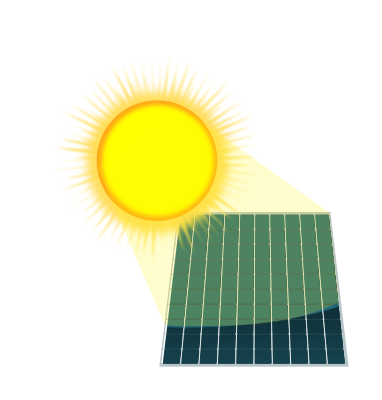Renewable Energy has many parts, and some of them can do jobs that others cannot do. It is important to work together to bring the best renewable Energy to the world that we can hope to achieve.
This diagram represents a short overview over different elements of a renewable energy network, and what the different parts can do, and what not.
For example, Hydropower can be both an energy source (flowing water through a turbine) but also a means of energy storage (by keeping the water behind the dam). Renewable Biomass can be stored well, but can also be turned into a renewable source of energy. Batteries can store energy well, but cannot produce energy.
Thoughts, comments, likes :-)
Hydro requires massive destruction of nature. We can do way better than hydro. I live in BC where all my power is hydro. I, and the endangered, keystone species of our local ecosystem, would be very happy to see every dam demolished on favour of other actually planet friendly methods.
Industrial scale power requires massive destruction of nature. That’s the nature of trying to light and heat millions of homes, especially in the winter. The question must become what is the least harmful most effective thing to do. It isn’t as simple as “solar farms and wind farms” since you have to heat and light those homes when the sun isn’t shining and the wind isn’t blowing. “Batteries!” Sure but the environmental devastation from having to build battery banks that large would be overwhelming, not to mention having to size your solar and wind to provide all the province’s power while the sun shines and wind blows meaning there’d be way more than you expect, and then after 30 years you’d have to do it all over again because the batteries, windmills, and solar panels would all have to be replaced.
Water looks nice when it’s at a scale that can’t power anything too. In fact, even small enough scale fossil fuels don’t look that bad. The problem is when you make it big enough to actually provide all the energy you need. One big reason why “reduce” is the most important thing we can do.
So this is a question that’s been in the back of my mind for awhile while seeing celebrations of dams being removed, no worries if you don’t want to be the one to answer it.
I think I understand the extent of the damage caused by the implementation of dams, but I guess my impression had been that that damage was done, and there wasn’t much of a timeline on fixing it. Like, after eighty years or so, are there fish still trying to get past it?
At the same time, we’re struggling (failing?) globally to get away from fossil fuels quickly enough to avoid the worst of climate collapse. It seems like hydro is one of the more reliable green power sources, and is compatible with old grid infrastructure that counts on fairly consistent power so there’s less than has to be overhauled in order to just keep using hydro for awhile longer.
So at first glance, it seems like new solar and wind etc production would be better prioritized in replacing oil, coal, natural gas. Prioritizing replacing hydro feels like letting the perfect be the enemy of the good.
I haven’t seen that discussion anywhere, so I genuinely expect I’m wrong about that, but I’m wondering why.
There are forms of hydroelectric generation that aren’t damaging to the environment. We just need to actually be aware of the consequences and perform an environmental risk assessment. I think this is a requirement for new installations in the US, but I could be wrong.
Nothing significant. Hydro works on the principal of massive quantities of water are cheap. Massive quantities will always need a lot of space.
They also often have a lifespan, even if it is generally a long one. The US is beginning to have to decommission a lot of dams across the country, because they have become a danger to towns downstream from them. And it’s both not cheap and not usually viewed as necessary until one bursts and does a lot of damage.
Most dams in the US were built for flood control near towns, not power generation, so these old dams beginning to show faults is especially dangerous to people.
Here’s my favourite Practical Enginerring on the failure of the Orville Dam spillway: https://youtu.be/jxNM4DGBRMU?si=O6T91xjCgxH7demP
Very interesting. Thank you.
Minor mitigations at best. Those environmental impact studies aren’t about finding a way to cause no interruption to nature, they are about acceptable losses determined by pro-dam lobbyists if any regulations exist at all. But these are the exact kind of laws both Democrats and Republicans have been gutting for decades in favour of small government.
Turning a river into a lake is not good for river dependant life. Blocking half of it behind a wall is terrible. Fish ladders are not a replacement for open river, it will only save an “acceptable” fraction of some species like salmon, not allow full passage of all life in the ecosystem.
As the image above indicates, hydro is not only an energy source, it can be used for energy storage. Run pumps to pump more water over the dam when you have an excess of power and let the water flow through the turbines when you need power.
So it’s like a giant battery. Except unlike most batteries there’s no toxic chemicals involved.
Given that most renewable energy doesn’t generate consistent energy (it’s not windy every day, it’s not sunny every day, it’s never sunny at night) there will be a huge need for energy storage. While we could spend a lot of money of making giant batteries with toxic materials to solve this, we need to also need to consider the environmental impact of that kind of technology. Also consider the time it would take to make these massive banks of batteries. The materials may be better used in replacing gasoline engines, so it may be awhile before we have the materials needed to make the energy storage needed for renewable energy to work, and that’s only if we want to make giant chemical batteries someday.
Sorry, but given the importance of hydro in a renewable energy grid, I don’t think it’s going away for a very long time. Consider the environmental impact of having forests that burn down every year. Gonna have to make some compromises so that doesn’t continue to happen forever.
The forests wouldn’t exist were it not for pre-colonial salmon numbers. Their rotting carcasses are responsible for almost a quarter of the nitrogen in all the soil in the British Columbian and Tlingit forests (that goes up to 70% in riparian zones). The environmental impact of dams is no more forests as they die of malnutrition. So in a way you’re right, no more forest fires if there’s no forest. We can do better than dams and MUST do better than dams.
I’m pretty sure forests exist where there aren’t salmon. You hate dams, but I hate coal power more than that. And I hate these endless forest fires caused by global warming more than you hate the relatively small area around a dam being affected by the dam.
“Somebody find a better way” doesn’t help. We gotta get past this NIMBYism and learn to accept that it’s not just the guys rolling coal in their F-350s that are going to need to compromise. You need to make compromises too. Global warming can’t just be used as tool to get whatever you want. The guy in the F-350 is gonna have to get an electric car and you’re gonna have to accept there’s going to be a dam in your forest.
Please try to look past the trees in your immediate surroundings to see the entire forest. It’s currently burning. And it’s not because of a dam it’s because there’s too many coal plants and not enough dams. You’re using a device right now that runs on electricity. That electricity comes from somewhere. Where that power is currently coming from is causing this: https://globalnews.ca/news/10574072/bc-wildfire-map-2024-live-today/ Are you really arguing a dam has a bigger environmental impact than this?
And gobal warming means the rivers will soon be hot enough that about half of all salmon species stroke out in them. Replaceing clean energy with fossil fuels, which is the definitional result of removing clean energy from the grid while any fossil plants remain connected, not only hurts salmon numbers today, but ensures that for hundreds upon hundreds of years into the future there can be no salmon.
There is a reason why despite the no change to the number of dams and thouse same dams getting easier and easier for salmon to cross salmon runs have still tended to decline, and keeping methane plants that would otherwise be shut down today operating for decades to come does not help with that.
Neglecting all the stronger hurricanes, monsoons, floods, elimination of coral reefs, forests, and habitat, we can fertilize trees and reintroduce salmon, we cannot refrigerate the rivers.
This distinction is important. I’ve seen a lot of greenwashing about hydrogen as a renewable energy source, but it is only a non-carbon producing form energy storage, and is almost entirely energy stored from processing fossil fuels.
Creating it from electricity is highly inefficient, so that’s why it’s made from other fossil fuels (that in theory would have been wasted). If hydrogen was easily compacted and stored long term it would work, but those are the biggest problems it faces, along with having a much lower energy density that fossil fuels. Hard to beat those carbon bonds without going nuclear.
This is a cool diagram, but I think it makes it look like you can’t combine stuff. Obviously solar and wind in a lot of cases just plugged straight into batteries for storage.
On the flippy floppy, hydropower can do both, but in completely different ways. If you build a dam, you can’t generate electricity, and if you build a turbine, you can’t store it.
I don’t know what my point overall is. I guess just that energy is complicated, and there probably isn’t a “one size fits all” fix.
Or you put turbines in your dam and get both, as is common.
Well yes, but how is that any different from putting batteries in your wind farm?
It’s not really, except that that’s usually what’s referred to by the word “hydro”
Is biomass renewable, though? I mean it takes a lot of time for a tree to grow. A lot.
The deforestation of the Amazon is largely driven by a desire for more land to grow biofuels (sugarcane) on.
The byproducts of sugar production (the leaves and stalks) are used to produce ethanol from a biological, renewable source, as opposed to fossil fuels.
Oh, and in the Amazon, said sugarcane farming is often done by slaves.
You either need more farmland to grow what will become biofuels on it, or you have to stop growing food on existing farmland, which means food gets more expensive.
There are other types of biomass though. Using waste product from food production or gas from sewage plants is somewhat reasonable.
It is renewable in the sense that given infinite time, you can use it to grow infinite energy (for the nitpickers: assuming an eternal sun).
It is not infinite though and the amount of power you can extract from it is limited but that’s true for every renewable sources: you have a limited amount of places where you can put dams, where you can put windmills or even solar panels.
What is important is that it is not power generation that consumes a scarce good (as fossil power does) but that it is increases in power generation that consumes it, in a reversible way.
If you look at it like that, fossil is renewable as well. Just a tiny bit slower, but still, given enough time … :)
Not really IIRC. Modern bacteria are more efficient at breaking down organic materials and forests buried today won’t make oil anymore.
That’s interesting. You have an url handy for now details? Even if this wasn’t the case, fossil generation isn’t real feasible for us anyway.
Sorry I don’t have it handy, just read it, probably on /r/askscience a while ago. A quick search indicate that maybe this is not as true as I thought. That seems to be the case mostly for coal and for some forms of oil, but not all of it.
Hey, no worries. It’s interesting how nature changes.
Poplars and willows are fairly fast growing. Plus there are perennial grass feedstocks
That certainly helps, but still, at scale is hardly sustainable.
Wood is a material that’s made from carbon that has been extracted from the atmosphere using an organic process.
You can make buildings and furniture out of wood and you’re sequestering carbon while having a nice place to live and some nice furniture.
You can also burn the wood for heat energy. This releases the carbon into the atmosphere, but the tree that got cut down makes space for a new tree to grow. When that new tree grows it pulls out the carbon that was added by burning the wood. So it’s carbon neutral.
Renewable doesn’t mean it’s instantly replaced. It means there’s a well understood process to replace it. It’s not popular among those that hate the lumber industry, but it’s one of the more environmentally friendly options considering global warming. Consider how trees used for building means using carbon extracted from the air for building things. Even burning wood is carbon neutral, so it’s better than most heating options.
Sure, that’s all nice. However at what scale is that sustainable? Also burning wood yields all sorts of fine particles, not just CO2, which are not good for humans. Plus we are reducing forests at global level. Can you imagine the forest area for providing power to a whole city?
Wood wouldn’t be a good option for powering a city, obviously. Neither is coal though.
Global warming isn’t going to be solved by a single solution. Wood makes sense for building materials and for heating in rural areas. It’s not going to be good for producing electricity, but fortunately there’s other technology for that.
Yes, however the article lists it as a power source (of course it’s great for building if possible) hence I’m looking at that aspect only. It’s more suitable for heating, however, again, at scale it would be problematic (at that’s not even a big one) plus emissions are not healthy. If you ignore emissions and use it for heating of few areas here and there (like it is a trend with pellets), taking into account growth rate, it could be a renewable I suppose.
@Mihies @gandalf_der_12te Yes it is. The waste from biomass can be used as fertiliser for new plants, so a circle is formed. One tree is not quite the right model, you could think instead about managed forests where older growth is harvested and new growth is always in various stages, from saplings to ‘ready next year’. Carbon from the biomass process is used by the new growth.
Yes, and, once established, a grove of trees can continue providing biomass for literally centuries. Look up coppicing.
TIL. But I’m not convinced that this would solve the problem for good. But it certainly helps with growth.
There are different kinds of solar power generation, the photovoltaic panels that generate electricity directly that we all know and love, and thermal solar. You’ll commonly see a small-scaled version of this used on homes as a hot water system.
Scale it up though and you’ve got a system that can generate energy 24/7, as long as you’ve got enough thermal mass, and sunlight.
Where does geothermal fit in all this? I don’t think it can really be used as an energy storage system unless there’s some technique I’m not thinking of, but since it isn’t as intermittent, it doesn’t really need much energy storage either, as far as I’m aware. I’ve noticed it seems to get left out of a lot of discussion on renewables, but I’m not sure why.
Biomass and hydro* aren’t storage for intermittent power (*except pumped hydro). Rather they are natural sources of accumulated solar power that can be tapped on demand. In that sense, so is geothermal.
Isn’t geothermal mostly nuclear power?
More a potentially infinite (within human lifetimes) heat source from a still-warm Earth interior. Limited in that you can’t harness it from anywhere other than local.
Partially, some of the heat comes from radioactive decay within the Earth, and some is left over from the Earth’s formation.
Nah it’s friction from rocks banging into each other when the Earth was being formed. The surface of the Earth cooled down, but you dig down deep enough it gets really hot. Hot enough to melt rocks, or as the pros call it… “magma”. Dump some water down there and you get steam and you can drive a turbine with that steam. Though actual geothermal energy implementations are probably a little more complicated than that. But that’s the gist of it.
Well, Wikipedia claims
The Earth has an internal heat content of 1031 joules (3×1015 TWh), About 20% of this is residual heat from planetary accretion; the remainder is attributed to past and current radioactive decay of naturally occurring isotopes.
In that sense, it’s the only renewable energy source we have that’s not indirectly powered by the sun. It’s most similar to (proper) nuclear power, but the latter isn’t “renewable” because it requires digging up fuel from the crust.
In some senses the whole planet is storing a huge amount of energy underground.
But yeah I think in the context of this kind of discussion it’s would be a renewable energy source. While it’s probably technically not renewable, but there’s so much of it we’d never run out. I mean if you want to be super-pedantic, solar and wind aren’t renewable either because we don’t have a way to make a new sun when that thing burns out, but it’s like come on.
But probably not a storage solution, because why would you put energy into the Earth’s core? We worried about hell freezing over or something?
Same energy (hah) as a corporate venn diagram.
Sorry if I’m not following: solar or wind power cannot be stored - like, in batteries?
They aren’t forms of energy storage on their own. Just like batteries aren’t a source of energy on their own.
If only we could find some way of storing some wind so we could release it when there’s no natural wind around.
We could run wind turbines in reverse
I understood that reference
deleted by creator
There’s a separate item for batteries on the list.
You can also store energy from wind and solar in a hydro dam by pumping water.
Energy can also be stored as Hydrogen, that should also be included on the list as an energy storage method.
You can’t turn other forms of energy into solar or wind and store it in those forms. In contrast, hydroelectricity can store energy in pumped storage systems where excess electricity is used to move water to higher elevation (exchanging electricity for potential energy).
yes, and more importantly, normal Hydro plants could be updated to release water at selected times, to create “on-demand power”. The energy is stored in the water behind the dam. So conventional, already-existing hydro dams can perform a two-sided function: Storing water, and to release it on-demand. Like a battery that is refilled by nature.
AFAIK, that’s exactly what storage power plants do https://en.m.wikipedia.org/wiki/Pumped-storage_hydroelectricity









